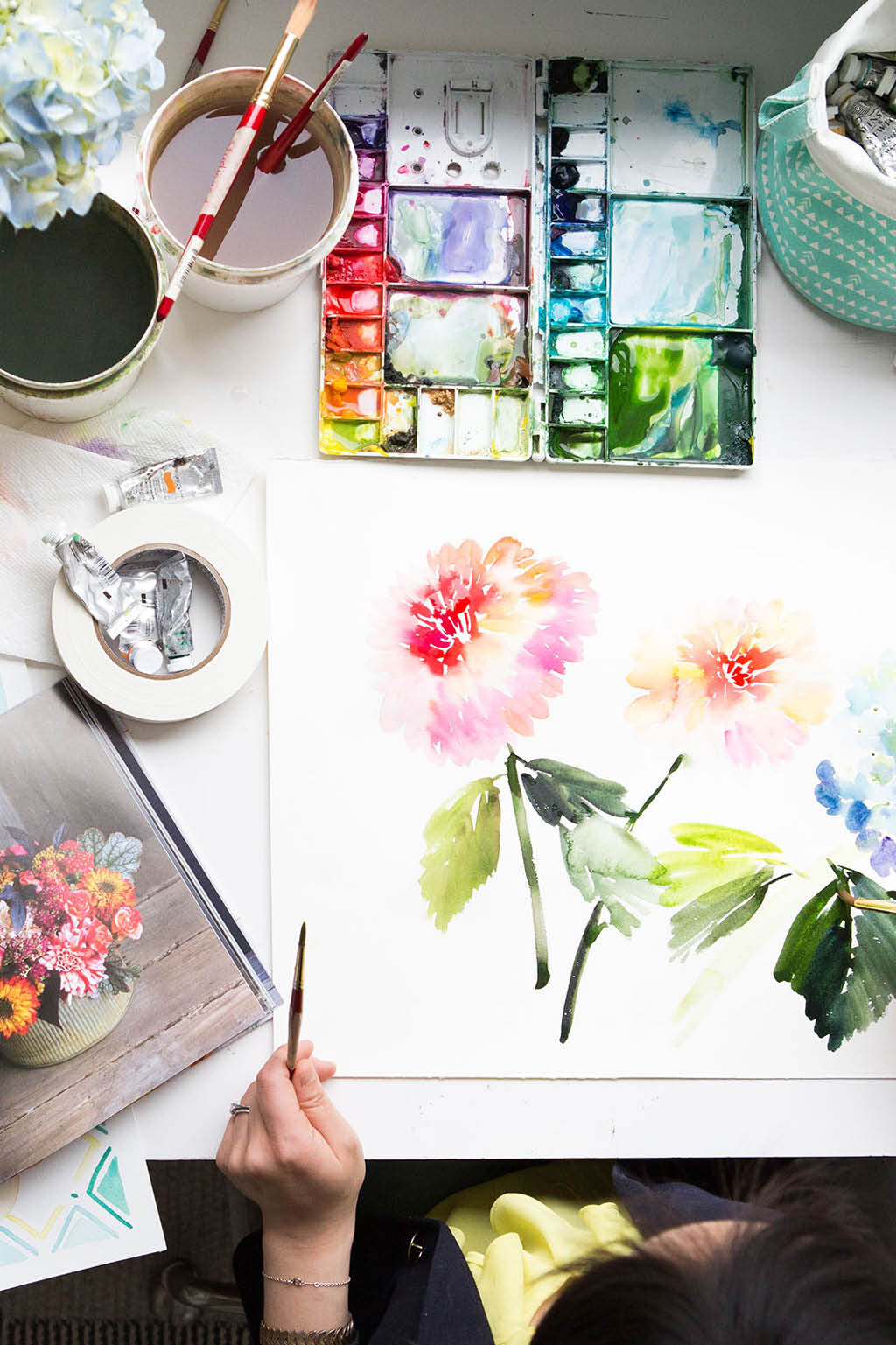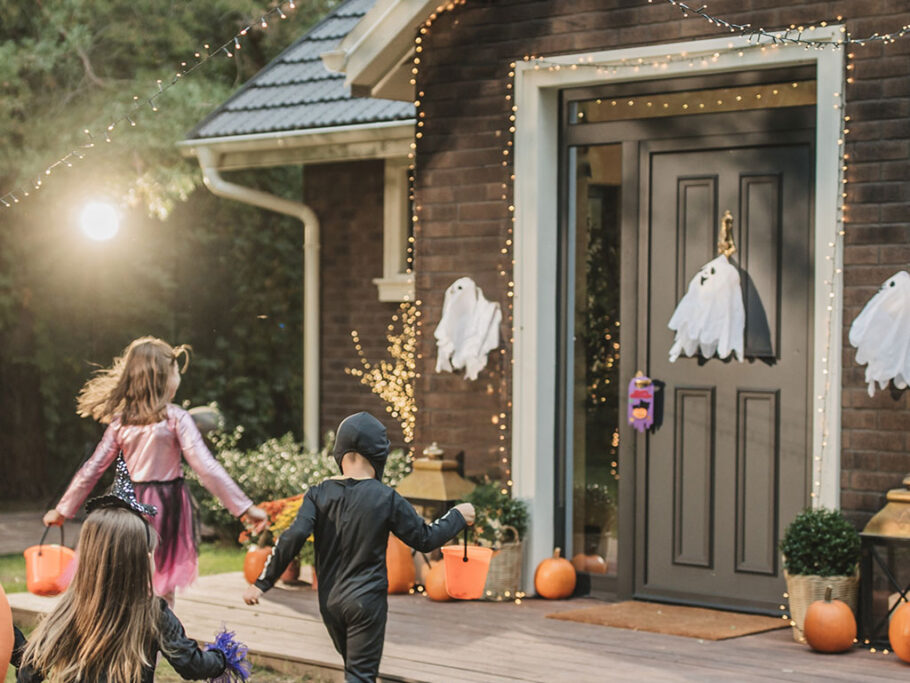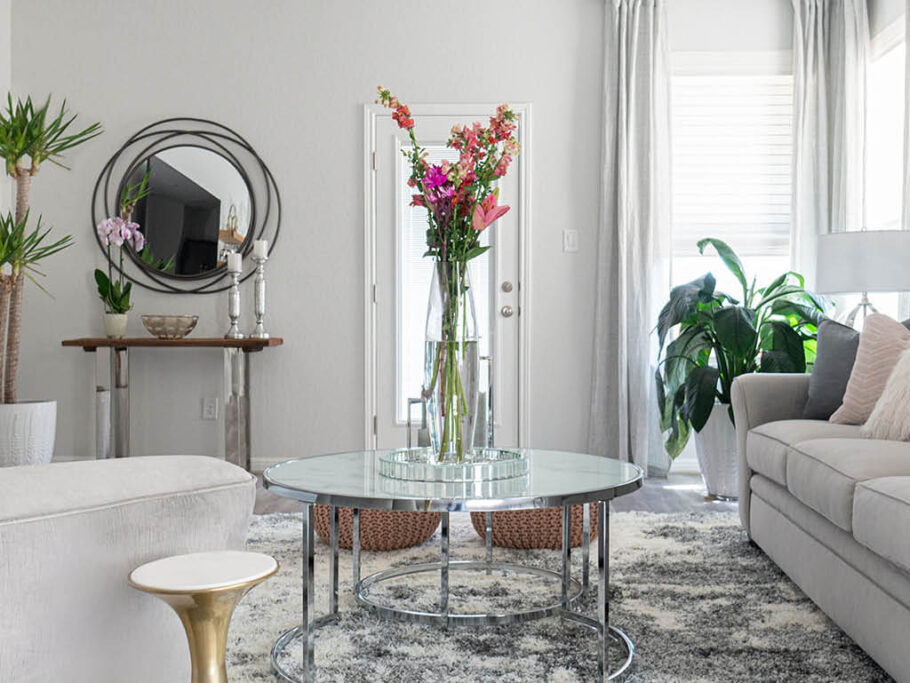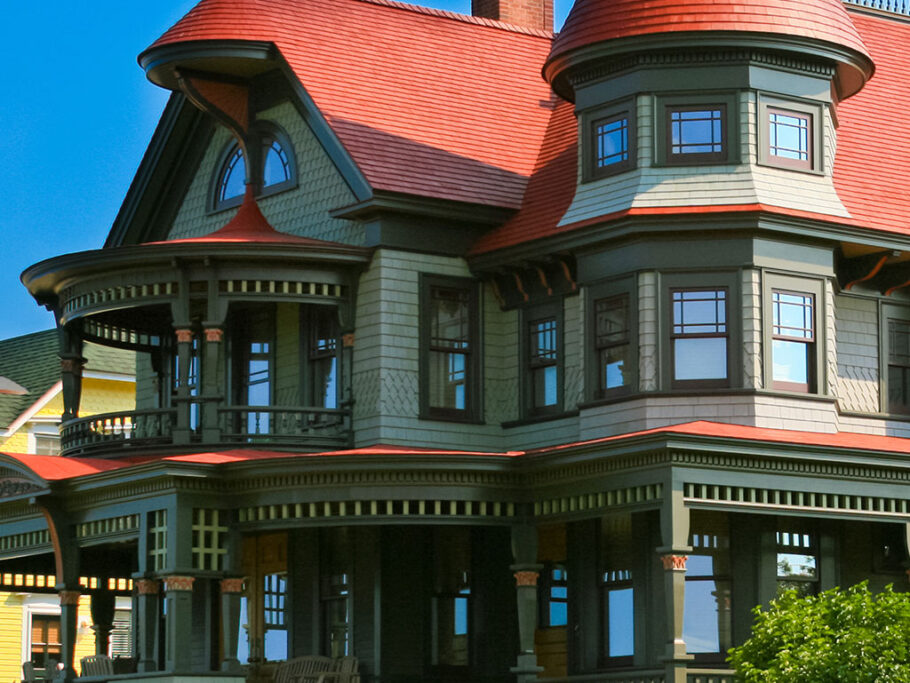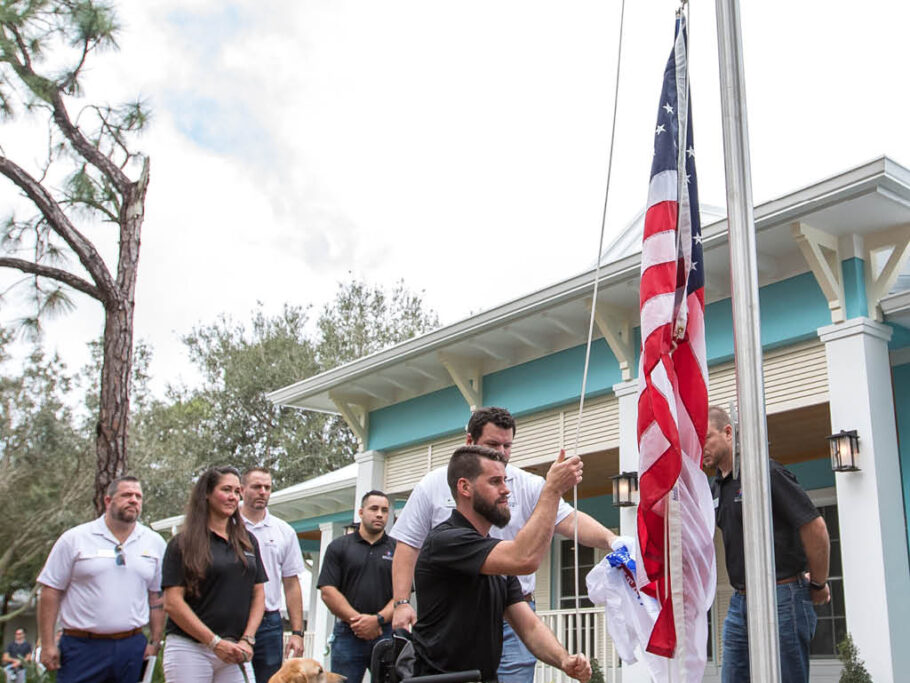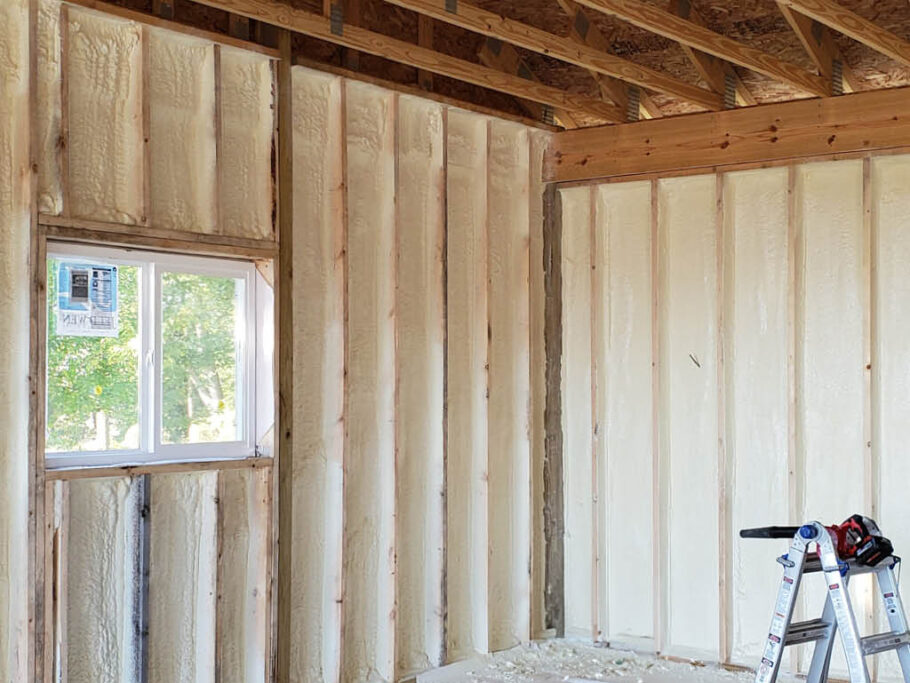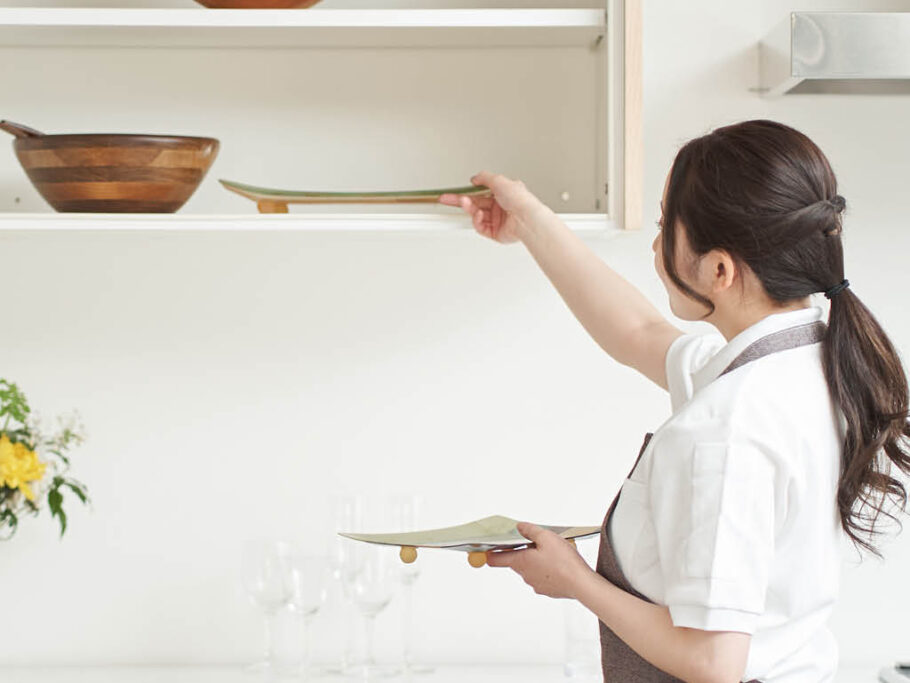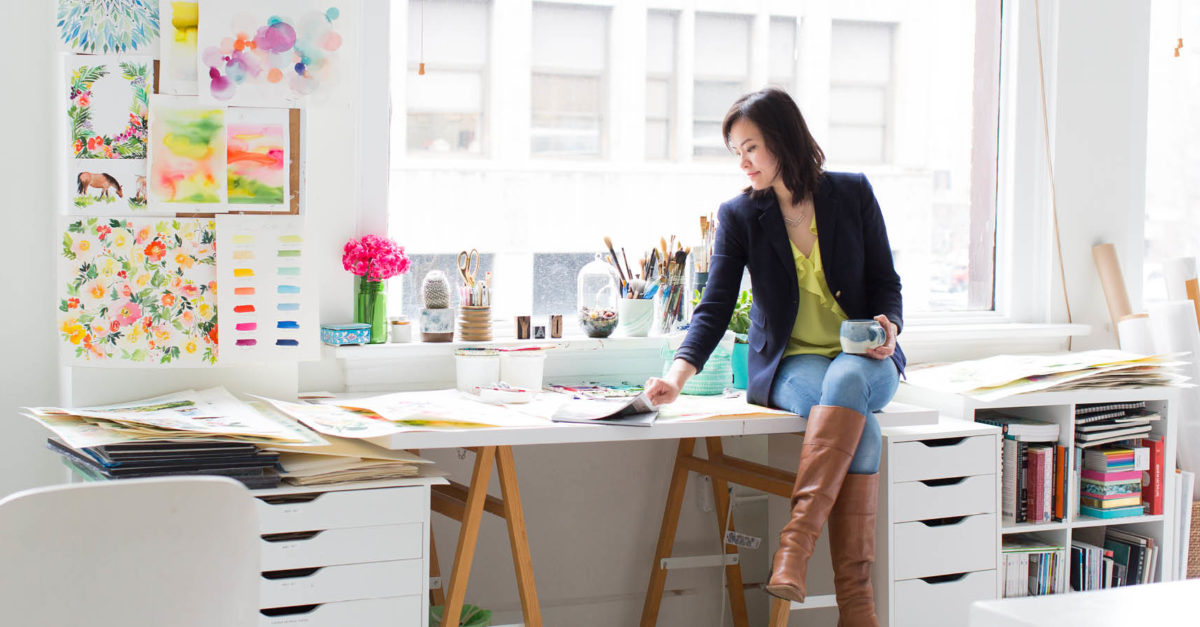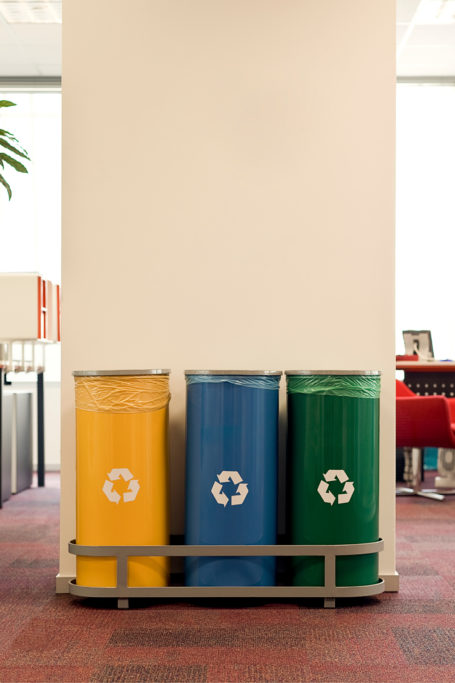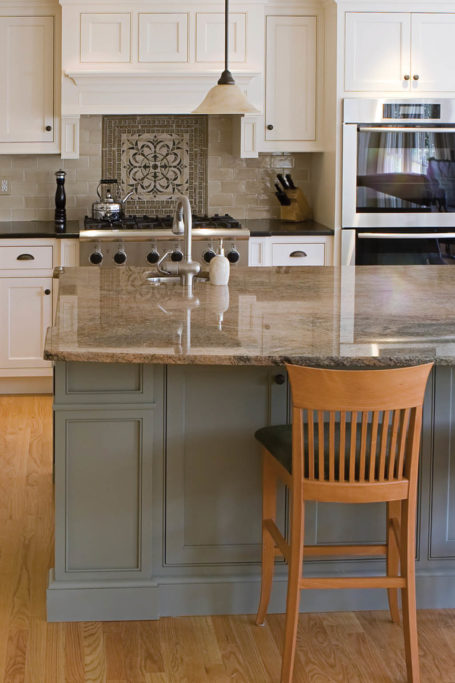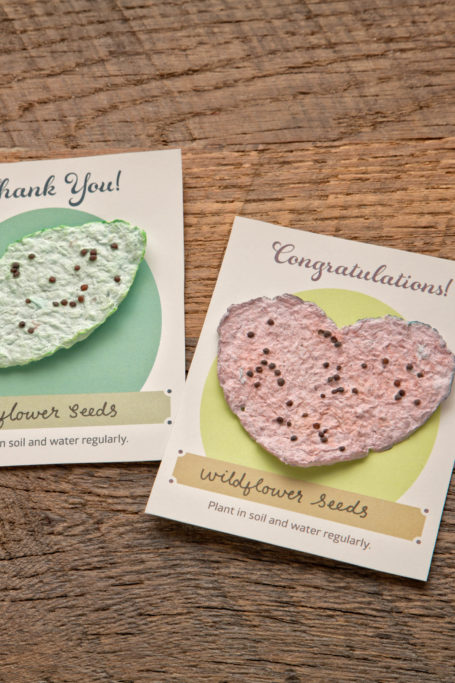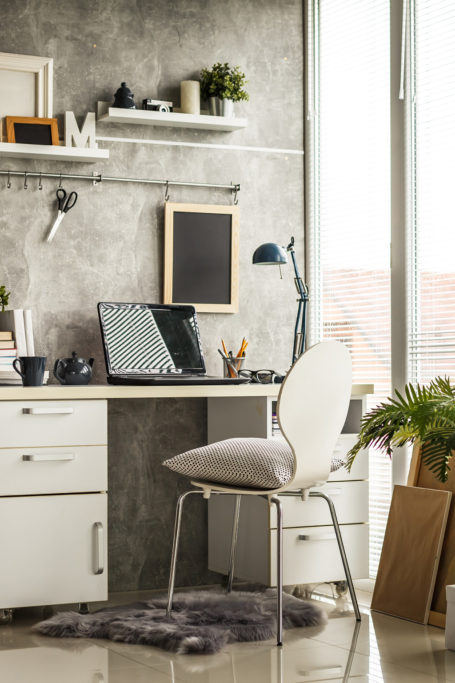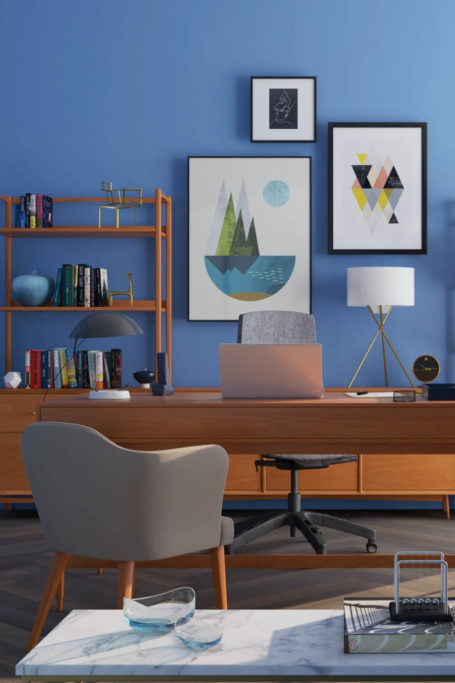Awash In Color
Originally envisioning a future as an oil painter, Yao Cheng abruptly shifted course into the world of textiles while studying at Rhode Island School of Design. A chance meeting with some watercolor paints and a tutorial from a colleague would alter her trajectory yet again and set her on the path to her current career as an artist and small-business owner in Columbus, Ohio.
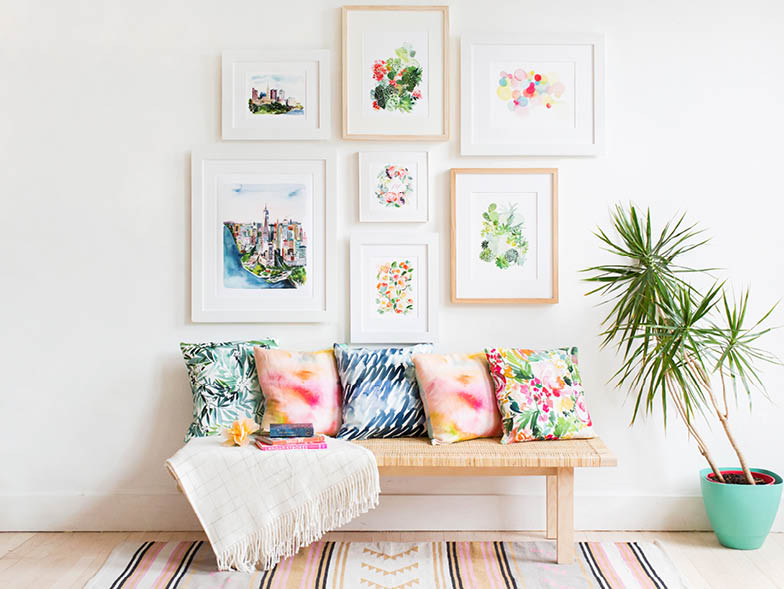
What did your path to the art world look like? Did your family encourage your love of art?
I lived in China until I was about eight, at which time I came to the United States. My path to art was introduced really early on by my mom. When I was four or five, she took me to an art class in my hometown of Nanchang. I was immediately hooked; it was a very instinctual and natural way for me to express myself from the beginning.
My mom definitely encouraged my creative side throughout my childhood. The rest of my family was more of a mix—many of them were not sure if an art education would lead to financial stability. But I knew in my heart that this was the right path for both my education and my career.
You graduated from Rhode Island School of Design with a bachelor of fine arts in textiles. Was that always the medium you wanted to pursue?
I initially went to RISD to pursue oil painting. Around that time, I became obsessed with knitting. Working with my hands in such a visceral way was really intriguing, and something in me knew I needed to change my major.
I saw textiles as evolving my painting interests in a three-dimensional way.
During my junior year, I studied abroad at the China Academy of Art in Hangzhou for a semester. That was another distinct experience that has had a big influence on my work today. I learned a lot about traditional Chinese floral painting, as well as the power of expression through calligraphy and brushwork making.
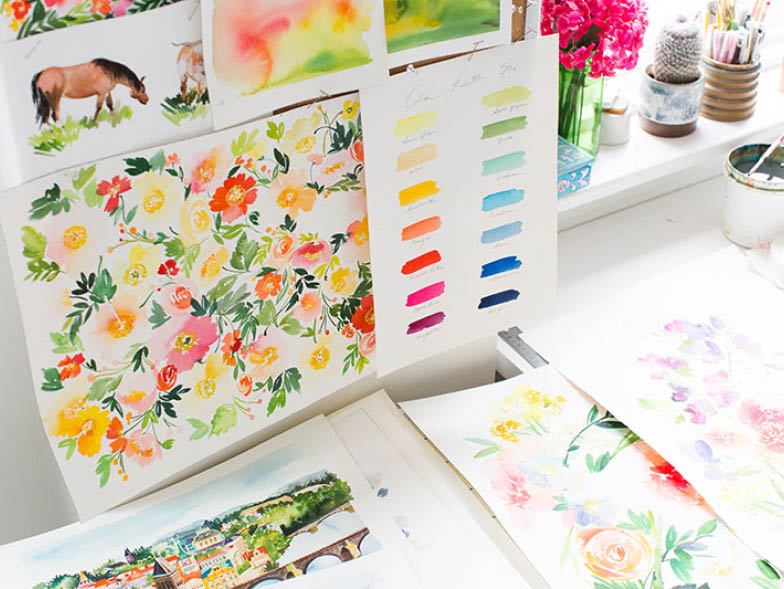
How did watercolor painting enter the picture? Are you self-taught?
I was designing patterns for Abercrombie & Fitch’s women’s brand at the time, including painted original designs. A work friend, who was much more experienced in watercolors, taught me different ways that I could play with them. He allowed me to see it from a modern, nontraditional way. It wasn’t about forcing the watercolors to be tight or highly technical; instead, I was challenged to control them only to a certain point and then allow them to do their own thing. It was so liberating and so much fun. I knew immediately that this was the medium that I had been searching for all along.
Did you always envision that your watercolors would go on textiles?
No, but it has been an incredibly satisfying experience to see it on textiles. When I started my business in 2012, I was very focused on what I knew, which was painting. I really wanted to get back into painting but with watercolors. From there, people loved the printed reproductions that I was selling of my paintings, so I was able to expand little by little into other categories, including textiles.
It makes a lot of sense to see my work on textiles now, considering that so much of my education was about creating textiles. I find the industry really exciting, especially with the technology of digital printing—it really enhances the vibrancy of watercolors.
There is a lot of plant life in your designs. What draws you to this subject matter?
I think my time studying abroad in China influenced a lot of my botanical work. I love trying to capture the life and energy that exist in plants. I find them poetic and so majestic. I love that they are imperfect and organic.
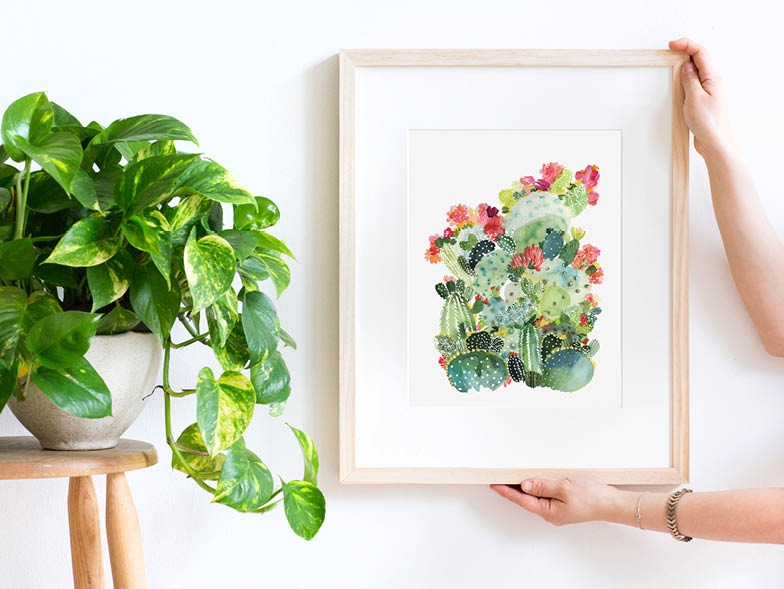
Tell us about your process. Do you sketch anything first?
If it’s work that’s outside of my own line of products, I will create rough pen sketches. However, if it’s my own body of work, I sketch in the form of painting. It’s a good exercise to jump right into painting and not rely on previous sketches. The best ideas come from that improvisation process, and I build more confidence as an artist when I know that I can look at a blank page and eventually arrive somewhere that is really compelling.
Do you have any surprising sources of inspiration?
I’m currently going through a phase where I want to find inspiration in real life, like going to an art museum. I want to experience art and find new ideas in a different way so that my paintings can move forward and be sparked by a different point of view.
But I think inspiration can also come in other ways, like music. I pay close attention to the tempo of music. The rhythms can spark a new idea or pair with something visual that I found in a book. It’s about combining inspirations from different places. I’m constantly mashing totally different things together—such as a geometric pattern combined with the colors that I see in a photograph of ice cream.
Funnily enough, I also find a lot of inspirations in my dreams. I think it’s my brain’s way of making sense of the things that I experience. Many times, I’ve painted a final piece after a nap or after a distinct dream that triggered an idea.
What artists do you admire?
There are many contemporary artists that I admire, but I try not to look at their work too much because I believe deeply in respecting the work of others. I think a mistake that a lot of people make, especially in the beginning of their careers as they are finding their own voice, is looking too much at others’ work that they admire. It’s very easy to then subconsciously create work that feels similar. I am a believer that, as an artist, it’s my responsibility to find my own ideas and not recreate anyone else’s.
I’ve often revisited Van Gogh’s work throughout my career. I love that he painted in a medium that’s totally different from mine and that he tried to capture light in a million colors. His work has a shimmer and a glow that make me feel like the fields are moving right in front of me. I’m always trying to capture that same feeling in my work.

How do you fight creative blocks? What resets your brain?
A creative block can be very frustrating to go through. I’m currently in one now. Fighting it has never worked for me; doing so only makes me more frustrated and costs me a lot of wasted time. My best defense is to recognize that I’m in a creative block and that it won’t last forever, and then I do something completely different until it passes.
You cofounded Rise & Design, a meetup for creatives in your area. What was the impetus for that?
I cofounded Rise & Design with my good friend and creative, Danielle Evans of Marmalade Bleue, back in 2016. Columbus is a wonderful city, but a lot of illustrators and designers are scattered among the suburbs, and because so many of us work from home, it’s hard for everyone to get together. Rise & Design was a way for us to provide a place for everyone to come together and strike up important conversations.
The beauty of Rise & Design comes from the fact that we don’t all belong to one industry, so our discussions are more expansive and provide more perspectives. We also see some college students come through, which is particularly exciting for me because I love being able to introduce the next generation of creatives to the real world of running a design business.
Rise & Design is something I’m incredibly proud of and am so grateful to have. It has grown into a community of amazing people. We are all genuinely supportive of each other, and having access to so many resources is very crucial for any small-business owner.
In an alternate universe, what is your profession?
I would also love to be a ceramist, a therapist, a pianist, a dancer, or even an astronaut, but being an artist is my focus and love for this lifetime.
For more info, visit yaochengdesign.com
